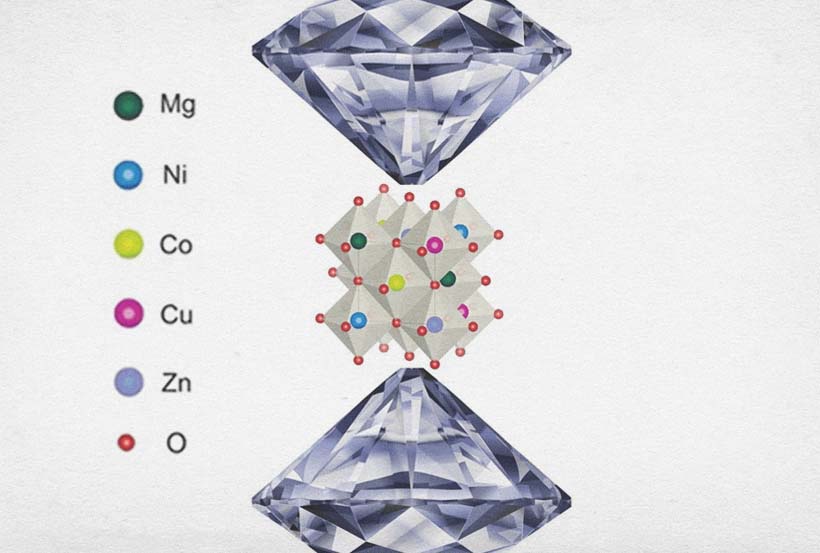
Promising disorder
At PETRA IV, promising materials can be studied that are interesting for numerous future developments – from more durable batteries to extremely fast supercomputers. The special property of this class of materials: They are particularly stable because their atoms are distributed completely at random in the crystal.
High-entropy oxides are a nascent but promising class of materials. They are composed of oxygen and at least five metals and seem to be interesting for numerous applications, such as better and more durable batteries or more scratch-resistant smartphone screens. The properties of these materials can already be studied today using PETRA III. The fine, narrowly focused X-rays produced by PETRA IV, however, could allow such analyses to be carried out in much greater detail.

One example of a high-entropy oxide is a material consisting of 50 percent oxygen and 10 percent each of cobalt, copper, magnesium, nickel and zinc. The crucial point is that the metal atoms are distributed in the crystal completely at random, i.e. without any recognisable order. This disorder – which scientists describe as high entropy – stabilises the material.
“Similar to an alloy, the properties of these materials can be specifically tailored by the choice of metal composition.”

A similar class of materials, the high-entropy hydrides, might be suitable for efficient hydrogen storage – an important factor in the energy transition.
Fundamental properties of these materials can already be analysed today using PETRA III. A while ago, for example, one team quite literally put such crystals under high pressure and observed the increasing deformation of their crystal lattice. This allows the effect of chemical additives to be simulated, which are used to change and ideally improve the properties of the materials.
“With PETRA IV, it ought to be possible to carry out such experiments in much greater detail than before,” Konstantin Glazyrin hopes. “It should also be possible to study the magnetic or electrical properties of components made of high-entropy materials while they are in action.”
The resulting applications could cover an extremely broad range – from smaller and more efficient electronic components for consumer electronics to quantum processor components for the ultrafast supercomputers of the future.

Heidrun Hillen
I am happy to answer your questions about PETRA IV.
Further research topics

Healthcare
How can diseases be better tackled?

New materials
How can we save resources?

Energy
How can we make more resilient materials?

New technologies
What do we need for the digital world of tomorrow?

Earth and the environment
How do we preserve our ecosystems?

Cultural heritage
How can we preserve our cultural treasures?

